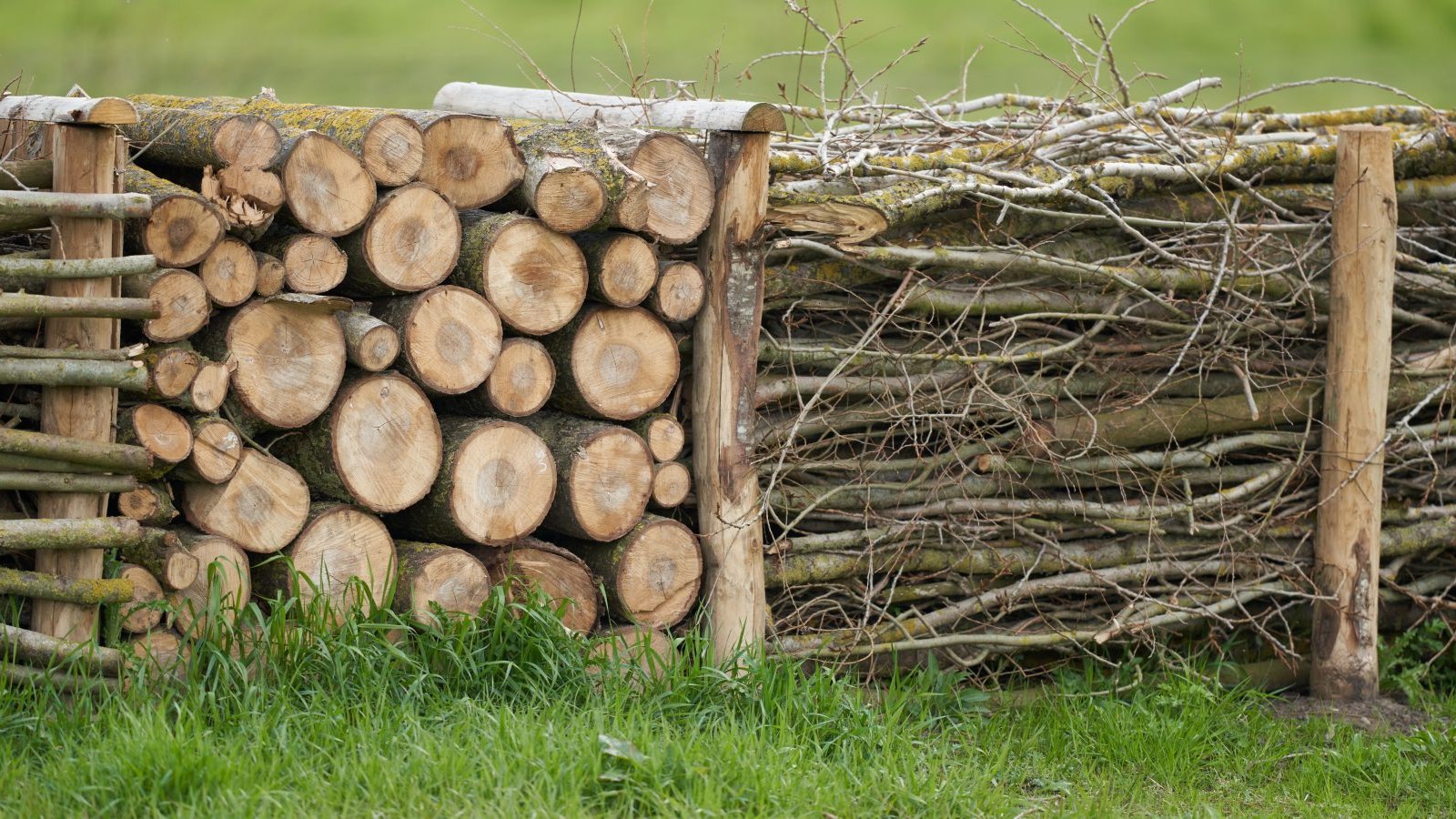What do building plots cost and where can you find the best value for money?
Self build expert, Mark Stevenson, takes a look at what you can expect to pay for a building plot in the UK, and where your budget will get you the best deal

If you’ve ever dreamed of building your own home, one of the first things you’ll need to do is buy a building plot. But how much does a building plot in the UK actually cost?
Like most aspects of property, the answer isn’t straightforward. It depends on several factors, including location, size, planning status and what house the plot will support.
In this article, I’ll explain the cost of building plots and explore why prices vary so much. Read on and you might even find out how to bag a bargain.
What is a building plot?
When considering the price of a building plot, its important to first understand what a building plot is. A building plot is a piece of land which is suitable for development. It must have a planning consent, be legally accessible and have access to at least the essential services.
Without these the prospect of development is highly unlikely and therefore the value of the land will be significantly reduced.
How much does a building plot cost?
The price of a building plot varies significantly, ranging from around £40,000 for a small plot to well over £1 million for something that’s exceptional and in a high value area. For most self-builders, the cost of a typical plot is somewhere between £100,000 to £300,000, depending on the location and what the plot can support.
At the lower end of the scale, plots are typically small and in low value locations such as the north of England or Scotland. Higher value plots are typically found in expensive locations such as the South East of England, where prices are driven up by high demand for housing.
Why do building plot costs vary?
Building plot prices can feel like a bit of a mystery, but they’re largely determined by a simple equation: the value of the finished house minus the costs of developing it. This brings a variety of factors into play which can cause plot prices to vary widely.
1. Local house prices
House prices, and by extension, plot prices, are driven by supply and demand. Desirable locations naturally command a premium and in areas with high demand – whether it’s urbanised areas or picturesque villages with great schools and transport links – house prices climb, pushing up the residual cost of building land.
2. Availability of land and planning restrictions
On the supply side, the availability of land plays a huge role. In urban areas where space is tight, or in regions where local councils enforce strict planning policies, fewer plots come to market. This scarcity creates more competition and, unsurprisingly, higher prices.
3. Development costs
Then there’s the cost of building the house. While construction costs do vary across the country, they’re not as different as you might think, so they don’t tend to drastically influence plot prices. However, professional builders and experienced self builders, who can construct high-value homes efficiently, have lower overall costs. This gives them more flexibility to pay higher prices for land, which can drive up plot costs for others.

In the end, it all comes back to the equation: the higher the final value of the house, the more the residual land (the plot) is worth, provided development costs are kept under control. This is why building plot prices can vary so dramatically, even within the same region.
Regional variations in building plot costs
The cheapest places to buy plots
The cheapest plots can often be found in Scotland, and Northern England, in places like Northumberland, Cumbria and County Durham. Here, land is more readily available, and with a lower population and lower average earnings, plot prices are very affordable. Parts of Wales and Northern Ireland are similar and you’ll find plots for as little as £40,000 to £80,000, depending on size and location.
Some examples of plots currently available on Plotfinder in these areas that all present a good opportunity are:
- Single building plot with planning – Middlestone Moor, Spennymoor
- Pair of semi detached houses with planning – Oxbridge, Stockton-on-Tees
- Plot for sale– Dundee, Scotland
- Single building plot with planning - Maesbrith, Dolgellau
Most expensive places to buy plots
In contrast, the most expensive building plots are generally found in London and the South East, as well as affluent rural areas such as the Cotswolds or parts of Cheshire. These regions command premium prices due to their desirable locations, proximity to major cities, and high property values.
In London, development land is so scarce that even tiny plots or infill plots can sell for hundreds of thousands of pounds. In the South East, the combination of limited land availability, restrictive planning policies and strong demand from commuters results in prices often exceeding multiple millions for a single plot.
Looking for a plot in these areas? Here are some opportunities currently up for grabs:
- Development opportunity – Mill Hill, Barnet
- Single building plot with planning – Cobham, Surrey
- Single building plot – East Finchley, North London
Good value places to buy plots
In places which fall outside of reasonable commuter distance to London, demand falls. So in the East of England, the Midlands and the South West, plot prices become more reasonable.
With a few high value exceptions such as around Bath, Norwich and Birmingham, building plots in these areas are more affordable, and typically fall within £150,000 to £250,000 for the average plot in a good location.
To see what you could get for your budget, here are some building plots currently on the market:
- Land for sale with outline planning consent – March, Cambridgeshire
- Land for sale – Barnetby Le Wold, North Lincolnshire
- Single plot with planning – Brackley, Northamptonshire
- Single plot with planning – Little Chesterford, Saffron Walden
- Single building plot with planning – Highcross Street, Market Harborough
Other factors that influence building plot costs
Larger plots typically cost more, but the cost per square metre may decrease with size depending on location. For example, a small urban infill plot may be disproportionately expensive compared to a larger rural site.
In terms of size, the scale of the house generally has a greater influence on the plot value. This is because the bigger house the more valuable it will be and therefore, the plot will be more expensive.
Other influential factors include:
- Greenfield vs brownfield sites – Greenfield plots often attract premium prices because they’re relatively in short supply due to restrictive planning policies and are perceived to be easier and cheaper to develop. Brownfield sites – land which has been previously developed - usually has higher enabling costs such as demolition and site clearance which depresses the residual land cost, making these plots more affordable.
- Land with or without planning permission – Plots with detailed planning permission for an attractive or bespoke design often command higher prices as the consent defines the residential value. Buying a plot without planning permission is much cheaper as it comes with the risk that planning permission may not be granted. The value of land where a residential consent is extremely unlikely, will be limited by its permitted use. For example, agricultural land and paddocks will only be worth £12,000 to £15,000 per acre.
- Serviced vs unserviced plots – Serviced plots, which come with water, electricity, and drainage, are more expensive as there’s no uncertainty around the connections of the essential services. Unserviced plots may be cheaper but by how much will depend on what the connection costs are.
- Location and amenities – Plots near good schools, transport links, and local services are highly desirable and priced accordingly. Conversely, whilst remote plots might seem idyllic, as they’re poorly connected they are usually more affordable.
How to reduce the cost of a building plot
If you’re looking to buy a bargain plot, here’s a few options to consider:
- Look off market – Oven-ready land which has already been identified as a building plot usually attracts a premium price due to the competitive nature of the market. By looking off market and finding an opportunity without the competition, the plot could be more affordable without the premium price tag.
- Buy land without planning permission – Land without planning permission is usually cheaper because there’s the risk of securing a consent as well as the expense in making the application. Whilst land without planning consent would seem risky, provided an option agreement, the financial exposure can be managed, turning unpermissioned land into great value opportunities. But remember, developing a design and securing a planning consent could cost around £10,000 to £20,000 so always assess the risks and make sure the deal is attractive before signing up an option agreement.
- Consider alternative development options – Look for properties with development potential, such as houses with large gardens with space to build an additional house. If the development potential hasn’t been spotted then the garden could be subdivided to form a very affordable garden plot.
- Purchase with others – In simple terms, single plots are sold at retail prices whereas sites with multiple plots, which are usually developed out by builders are sold at trade prices. By teaming up with friends or family or even other self-builders to buy a larger parcel of land, provided you’re happy to deal with the infrastructure and servicing of a larger site, by cutting out the developer profit, multi-plot sites can offer exceptional value.

Think you may have found a plot with planning consent but aren't keen on the design? Find if if you should change the design of a plot with planning approval and make sure you've covered off all the questions you need to ask when buying land to build on.
Get the Homebuilding & Renovating Newsletter
Bring your dream home to life with expert advice, how to guides and design inspiration. Sign up for our newsletter and get two free tickets to a Homebuilding & Renovating Show near you.
Mark Stevenson has worked as a construction professional for over 30 years and following an extensive career in housebuilding. He is currently chief operating officer for Custom Build Homes and chair of the National Custom and Self Build Association. He previously worked as managing director for Potton, helping self builders build their own homes.
Whilst Mark describes himself as a ‘professional builder’ as a result of his career in housebuilding and timber building system manufacturing, he has specialist knowledge of timber construction and extensive expertise in finding land and project management.
He regularly shares his knowledge at Homebuilding & Renovating Shows and and coaches self builders about how to build their own homes. Aside from Mark’s professional career, his skills also extend to practical building knowledge as a skilled joiner, hands-on renovator and serial self-builder of his own development projects.
He is also Vice Chair of industry body, the Structural Timber Association.

